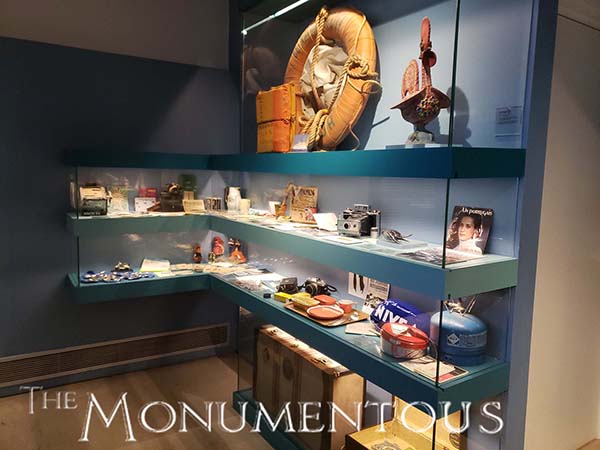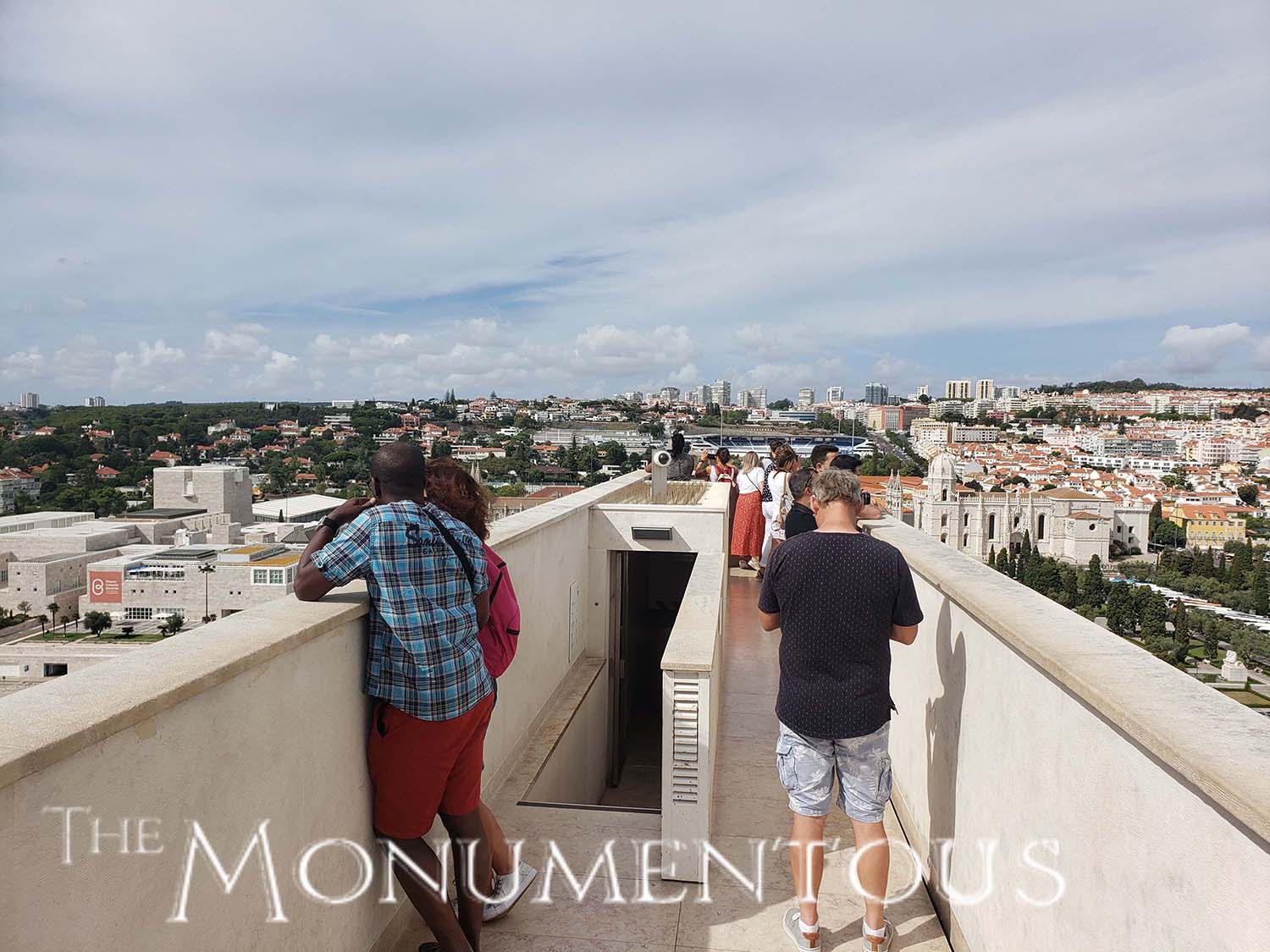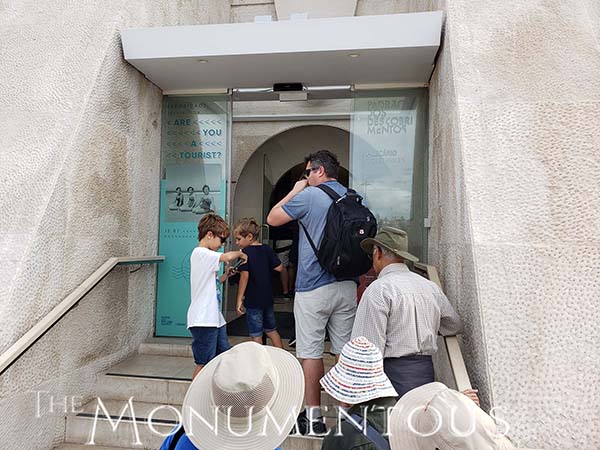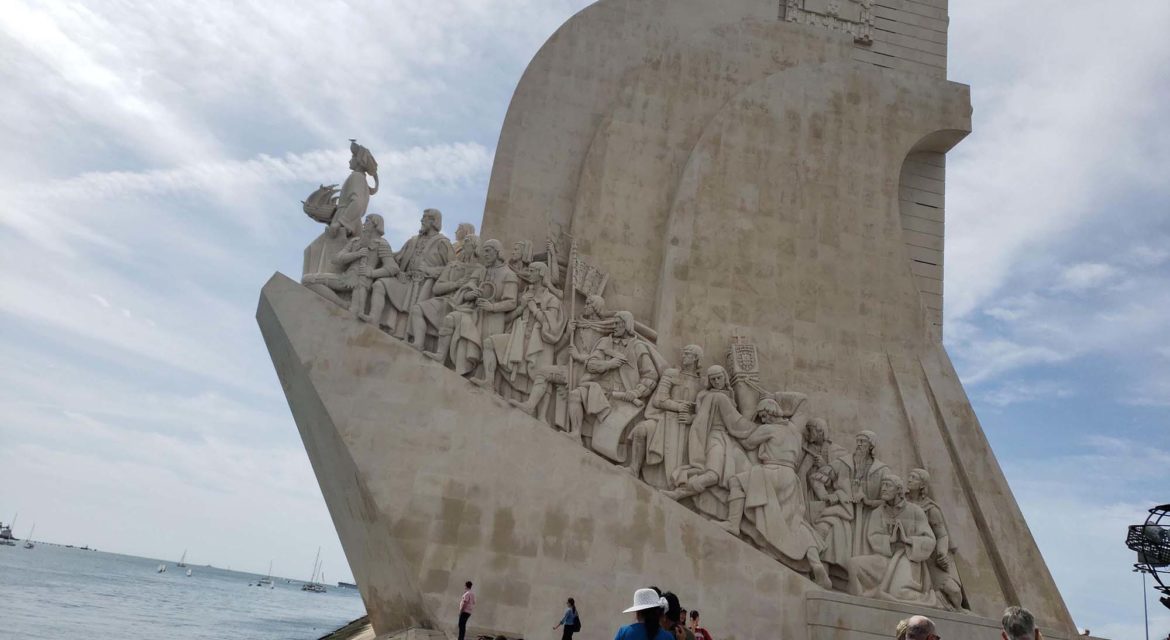 Located along the Tagus River estuary in Lisbon, Portugal, the Padrão dos Descobrimentos (Monument of the Discoveries) celebrates the Portuguese Age of Discovery (or Age of Exploration) during the 15th and 16th centuries. Standing 50 meters high with heroes of the era standing on a makeshift prow of a ship, the monument has become an icon for Lisbon that has had a notable impact on the economy and culture of the city.
Located along the Tagus River estuary in Lisbon, Portugal, the Padrão dos Descobrimentos (Monument of the Discoveries) celebrates the Portuguese Age of Discovery (or Age of Exploration) during the 15th and 16th centuries. Standing 50 meters high with heroes of the era standing on a makeshift prow of a ship, the monument has become an icon for Lisbon that has had a notable impact on the economy and culture of the city.

Celebrating the Portuguese Age of Discovery
The Monument of the Discoveries was designed to be a temporary beacon during the Portuguese World Exhibition opening in June 1940 but just like other monuments that were not supposed to last ended up becoming a permanent feature of the region. Located along the river where ships departed to explore and trade with India and the Orient, the Monument of the Discoveries represented a romanticized idealization of the Portuguese exploration that was typical of the era.
 The original wood and plaster structure deteriorated and had to be demolished after the exposition, but it quickly became the inspiration for something more enduring. By 1958, the government pushed through plans to construct a permanent Monument to the Discoveries. Between the end of 1958 and early 1960, the new monument was constructed in cement and rose-tinted stone with statues being sculpted from limestone. The new project was enlarged from the original 1940 model as part of the commemorations to celebrate 500 years since the death of Henry the Navigator. Inaugurated on 9 August 1960, it wasn’t until 1985 that features like public access to the top of the structure, spaces for an observation deck, an auditorium and hall for exhibitions were installed.
The original wood and plaster structure deteriorated and had to be demolished after the exposition, but it quickly became the inspiration for something more enduring. By 1958, the government pushed through plans to construct a permanent Monument to the Discoveries. Between the end of 1958 and early 1960, the new monument was constructed in cement and rose-tinted stone with statues being sculpted from limestone. The new project was enlarged from the original 1940 model as part of the commemorations to celebrate 500 years since the death of Henry the Navigator. Inaugurated on 9 August 1960, it wasn’t until 1985 that features like public access to the top of the structure, spaces for an observation deck, an auditorium and hall for exhibitions were installed.
The 52-meter-high monument dominates the shoreline and the observation deck provides an incredible panoramic view over the district and Tejo Estuary. However, that view is just one of the numerous experiences that have engaged residents and attracted visitors from across the world.

Looking Across Lisbon
 While the ship prow shape of the Monument of the Discoveries is immediately striking, arguably the most notable feature of the structure are the statues that line either side of it. The main statue on the piece depicts Henry the Navigator holding a model of a carrack, but there are a total of 33 figures from the history of the Discoveries on either side of the monument. On the eastern side of the monument are statues of Portugal’s great explorers, while on the western side are the key supporters who empowered the 15th century “Age of Discovery”. All of these statues depict specific figures from the era, including Vasco da Gama, Afonso V of Portugal, Ferdinand Magellan, Saint Francis Xavier and many others. They hold symbols that allude to their identity, which include navigators, cartographers, warriors, colonizers, missionaries, chroniclers and artists.
While the ship prow shape of the Monument of the Discoveries is immediately striking, arguably the most notable feature of the structure are the statues that line either side of it. The main statue on the piece depicts Henry the Navigator holding a model of a carrack, but there are a total of 33 figures from the history of the Discoveries on either side of the monument. On the eastern side of the monument are statues of Portugal’s great explorers, while on the western side are the key supporters who empowered the 15th century “Age of Discovery”. All of these statues depict specific figures from the era, including Vasco da Gama, Afonso V of Portugal, Ferdinand Magellan, Saint Francis Xavier and many others. They hold symbols that allude to their identity, which include navigators, cartographers, warriors, colonizers, missionaries, chroniclers and artists.
The monument has numerous other features though. On the pavement, just in front of the monument is the Mappa Mundi, a giant marble map of the world and important dates in history on the monument. The north side of the monument is formed by two giant stones which bear inscriptions in metallic letters. On the left side, the inscription above an anchor reads ‘TO THE INFANTE DOM HENRIQUE AND THE PORTUGUESE WHO DISCOVERED THE SEA ROUTES’. On the other side, the inscription above a laurel wreath reads, ‘ON THE V CENTENARY OF THE INFANTE DOM HENRIQUE 1460–1960′.
In the middle of the monument, a flight of nine steps provides visitors with access to a platform with a view over the entire surrounding area. The second flight of five stairs leads through to the interior of the monument. From there, visitors can take in the incredible view on the top of the monument. Additionally, educational services and programming that are always changing provide both residents and tourists with reasons to keep coming back to visit the monument.
These experiences have helped the Monument of the Discoveries create a positive impact on the culture and economy of Lisbon.

An Essential Element of the Lisbon Community
 Tickets for the exhibition, viewpoint and film are all included in a single price of admission. As an additional means of direct revenue, guided tours are also available. These tours offer general insight into the origins and story of the Monument to the Discoveries, as well as a brief account of the Portuguese discoveries during the Age of Discovery and beyond.
Tickets for the exhibition, viewpoint and film are all included in a single price of admission. As an additional means of direct revenue, guided tours are also available. These tours offer general insight into the origins and story of the Monument to the Discoveries, as well as a brief account of the Portuguese discoveries during the Age of Discovery and beyond.
As an additional means of direct revenue, the Monument to the Discoveries has space is available for bookings. The Auditorium has a capacity of 92 seats and also contains audiovisual equipment (screen, projector and microphones) along with a multipurpose meeting room.
These direct revenue opportunities are tied to the activities that residents and visitors can take part in. The Educational Service has several activities during school periods and holidays, aimed at all levels. The Program features numerous rotating exhibits that provide residents with reasons to keep coming back.
The connection that the Monument of the Discoveries has made with the entire city of Lisbon can be seen in how it’s utilized in everything from maps to advertisements, but this connection is about something even more. The engagement it compels goes beyond the experiences of the monument itself, as the cycle path and footpath that leads to the Monument to the Discoveries literally connects it to the people and culture of Lisbon. All of these elements have helped to make it an essential element of the community.
In doing so, Monument of the Discoveries has come to showcase how ideas or structures that start as something simple can be expanded to become icons for an entire region.

Embracing and Cultivating a Legacy
 Everything from the amazing view to exhibition spaces that regularly showcase different collections relating to Lisbon’s history highlights the many ways in which the Monument of the Discoveries has impacted Lisbon. By creating a monument that embraces the legacy of Portgual while also enabling numerous experiences associated with that legacy, the Monument of the Discoveries has defined a legacy that will continue to have a profound impact on Lisbon and all of Portugal.
Everything from the amazing view to exhibition spaces that regularly showcase different collections relating to Lisbon’s history highlights the many ways in which the Monument of the Discoveries has impacted Lisbon. By creating a monument that embraces the legacy of Portgual while also enabling numerous experiences associated with that legacy, the Monument of the Discoveries has defined a legacy that will continue to have a profound impact on Lisbon and all of Portugal.

